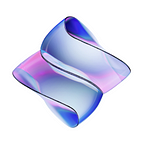Flux Protocol Partners with The Graph to Integrate Indexed Data with Smart Contracts
For most users, the blockchain simply works.
They can send, receive, swap, lend, and collateralize their assets almost as easily as sending an email. The blockchain simplifies doing business by cutting out incumbent middlemen who impose high costs on counterparties through fees and slow settlement times. It also leverages smart contracts, which allow for significant improvements in efficiency, automation, and security across all transaction types, as well as smoother interaction between entities such as seamless payments and automatic execution of third-party service providers on both sides of a transaction.
For developers, blockchain development is sometimes akin to a Jenga tower.
The rise of Blockchain technology has created an abundance of new data sources, with ever-increasing volumes and speeds, but data is only useful if captured, stored , and analyzed in real-time. Due to the way decentralized applications are architected, each of them has its own underlying indexing infrastructure. This makes it expensive to build and maintain, due to a large number of redundant backend systems, as well as creating centralized points of failure.
Writing their own indexing code while managing centralized servers and databases often introduces a raft of problems due to the fact that applications on the blockchain have difficulty preserving properties like history (since nodes can be reorganized or orphaned), block finality, and the security of queried data.
With decentralized indexing and search, developers can now focus on building and maintaining their dApps on behalf of users, rather than spending their time and money on updating and maintaining costly and complex search infrastructure. The Graph gives developers this ability.
Light up the Dark
The Graph is a protocol for storing, indexing, and querying indexed data on blockchains, making large data sets traceable, accessible, and interoperable for protocols. Think of it as Google for blockchain Data. Data from the blockchain is analyzed and gathered before being stored in various indexes known as Subgraphs.
The Graph allows developers to easily deploy to a reliable and decentralized public infrastructure, instead of or entrusting this data to centralized entities.
The convergence of on-chain and off-chain data unlocks a host of use cases for dApps. The ability to easily store, index, and query this data further enhances its utilization. However, securely making this data shareable amongst smart contracts requires an infrastructure that is also decentralized and interoperable. Flux Protocol’s partnership with The Graph is making this possible.
Oracles give smart contracts the ability to have direct interactions with real-world data which can enrich a smart contract’s functionality. As a meta-oracle, Flux Protocol will allow developers to pull data from subgraphs for their smart contracts, enabling them to trigger functions in reaction to real-time events on-chain and off-chain.
“Both The Graph and Flux are chain agnostic protocols,’ says Jasper De Gooijer, co-founder at Flux Protocol, “combining the two technologies can save smart contract engineers on-chain computing power and allow for cross-chain messaging. This enables a whole suite of new use cases to be built on our protocols like cross-chain bridging, swaps, and more”
The partnership will unlock cheaper and faster infrastructures for low-cost storage solutions for data generated by blockchain developers. One immediate use case currently being worked on is an infrastructure for bridging NFTs to and from Ethereum to the NEAR ecosystem.
